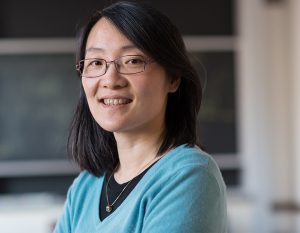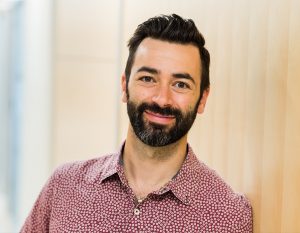Join us on November 9, 2021 from 7:00PM – 8:15PM
Members of the MIT Chemistry community come together to celebrate the department’s myriad accomplishments. Current students, alumni, faculty, staff, parents, supporters, and industry representatives gather to recognize the remarkable achievements of the Department of Chemistry.
Attendees will hear from Professor Mei Hong and Professor Alex K. Shalek, as well as Department Head Troy Van Voorhis.
Click here to register to attend the event.

The Hong laboratory develops and applies high-resolution solid-state nuclear magnetic resonance (NMR) spectroscopy to elucidate the three-dimensional structure, motion, and mechanism of action of proteins and carbohydrates. By developing NMR techniques that measure inter-atomic distances from angstroms to nanometers and that probe the geometry and rates of molecular motion, the Hong lab is investigating a broad range of biological questions. These include influenza proton channel structure and dynamics, HIV fusion protein structure, amyloid protein structure, and plant cell wall architecture. Information about the structure and dynamics of these proteins and polysaccharides provides rich insights into how virus proteins transport protons across lipid membranes, how viruses enter cells by merging two lipid membranes, how proteins misfold into amyloid fibrils in brains plagued by neurodegenerative diseases, and how plants use complex carbohydrates to construct their strong yet flexible cell walls.

Research in the Shalek Lab aims to develop and apply new technologies to facilitate our understanding of how cells collectively perform systems-level functions in health and disease. Our technology development leverages recent advances in genomics, chemical biology, and nanotechnology to establish cross-disciplinary platforms for in-depth profiling and precise manipulation of cells and their interactions. Our biological applications, meanwhile, focus on the roles of cellular heterogeneity and cell-to-cell communication in driving immune responses. Current studies examine how: innate and adaptive immune cells coordinate balanced responses to environmental changes with tissue-resident cells; host cell-pathogen interactions evolve across time and tissues during viral, bacterial, and parasitic infections; and, cancer cells evade immune responses. Overall, we aim to not only realize broadly-applicable experimental and computational tools, but also to help transform how the community thinks about single cells, cell-cell interactions, and tissue-level phenomena to aid in the design of more effective therapeutic and prophylactic interventions.
